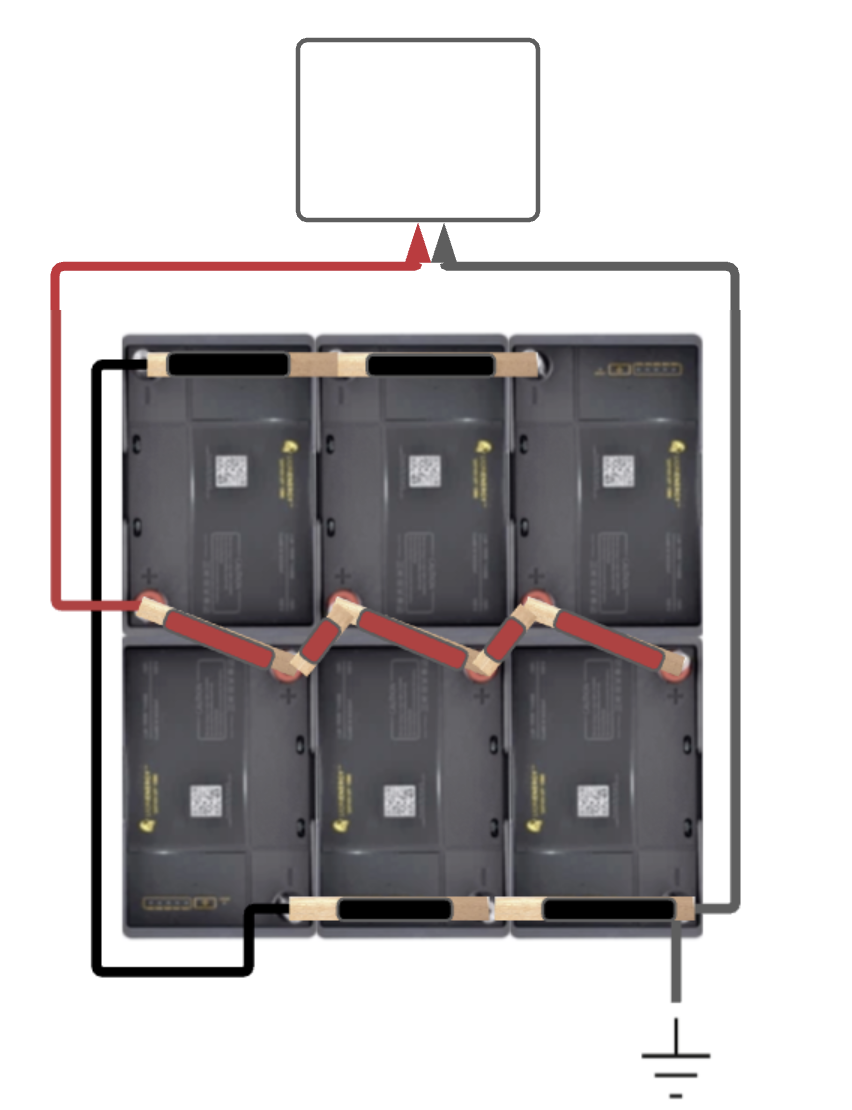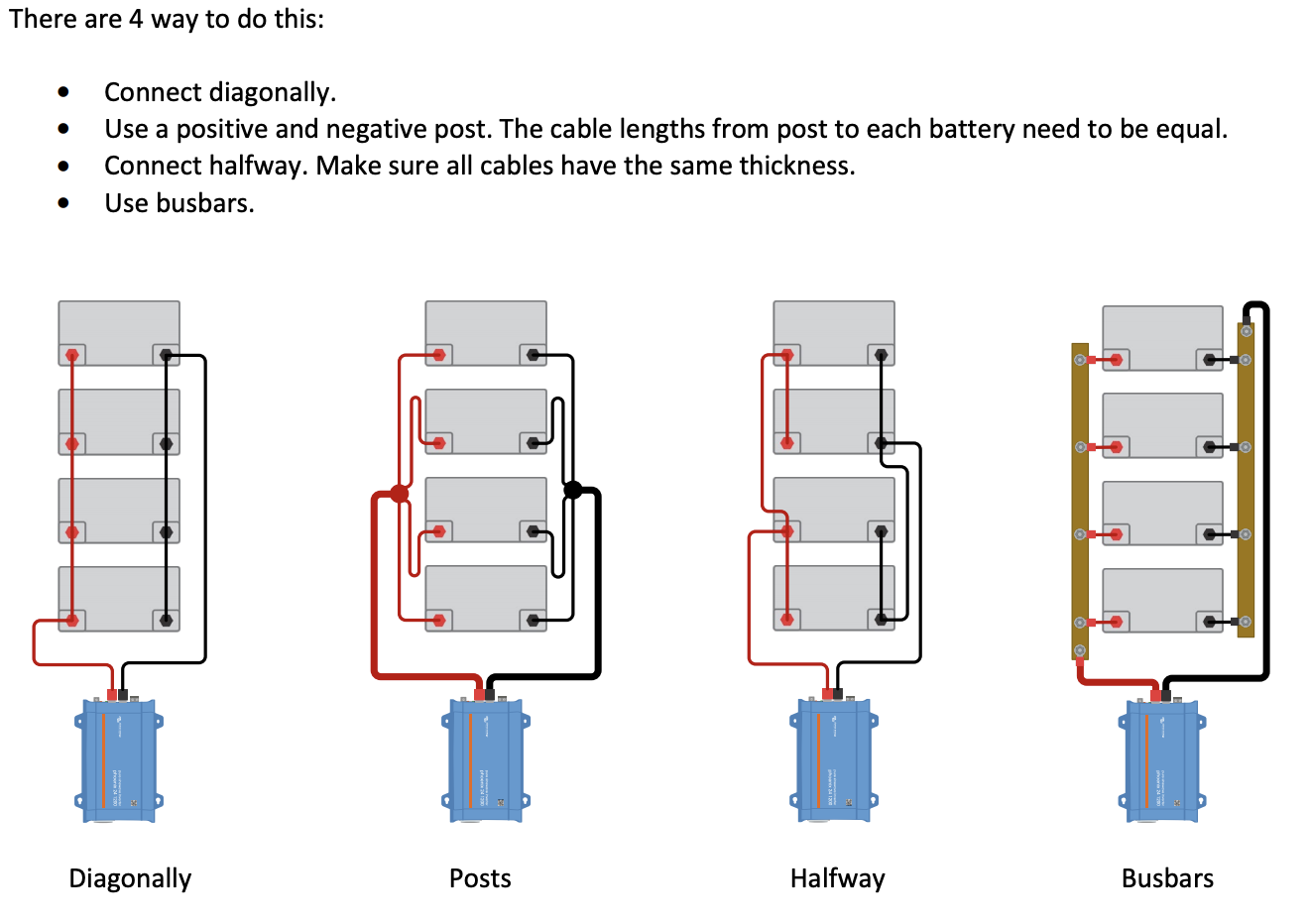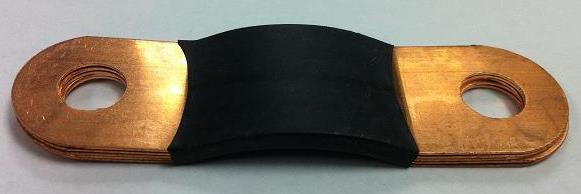
Hello - Looking for some clarification on batteries in parallel wiring using 110 stock copper of 1"w x 1/4" thick by proper length for clean terminal installation. I understand the cables need to be on opposite ends of the bank (Postive/Negative) as described in a diagonal use case. I will use heat shrink on each bar and have a piece of plexiglass over it for a nice visual and additional safety.
My question is what length of cables are needed to be matched? Is it the length of each copper bar on the positive + the length of the positive cable to the Lynx Power In has to be equal to each copper bar on the negative + the length of the negative cable to the Lynx Power in? Or is it just the Cables coming off the back and not the bars? Or something else?
Thank you.


